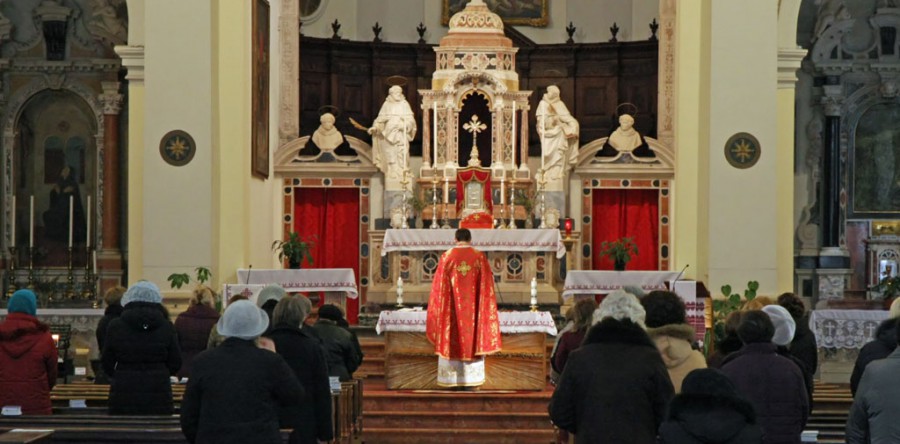FORNEY’S FIVE POINTS SUPPORTING THE ORDINANCES
Written by: Dennis Bailey, Jr.
Introduction
C. H. Forney set forth five qualifications or points that must be met in order for a Christian practice to be deemed an ordinance. They are divine authority, formal observance, sensuous elements, a great fact regarding human redemption, and symbolic of spiritual experience.[1] Each of the ordinances of baptism, the Lord’s Supper, and feet-washing will be examined herein in regards to each of these five points.
Baptism
The fact that Jesus was baptized during his time on earth may be reason enough for disciples to be baptized, since Jesus set an example for us all. However, the Bible clearly erases any and all doubt about the importance of the practice when it was written, “Therefore go and make disciples of all nations, baptizing them in the name of the Father and of the Son and of the Holy Spirit (emphasis added).”[2] This satisfies the first of Forney’s five points, establishing divine authority.
Secondly, a formal observance was set forth when Cornelius and other Gentile converts were baptized by Peter.[3] This same passage also clearly states that baptism must be performed with water,[4] which satisfies Forney’s third point, the necessity of a sensual or material element.[5]
The fourth point concerns a great fact connected with human redemption through the work of Christ himself.[6] Paul, in his epistle to the Romans, makes it clear that baptism is analogous to the burial and resurrection of Christ.[7] Just as the believer passes into the water and comes up again, Jesus died and rose so that we can be saved.
The fifth point is that baptism is symbolic of a fact in our spiritual experience.[8] Paul wrote of this in his letter to the Colossians, “Having been buried with him in baptism, in which you were also raised with him through your faith in the working of God, who raised him from the dead.”[9] Just as Jesus died, was buried, and resurrected, so does the ceremony of baptism signify the same for the believer.[10]
The Lord’s Supper
The divine authority for the ordinance of the Lord’s Supper is clear, “And he took bread, gave thanks and broke it, and gave it to them, saying, ‘This is my body given for you; do this in remembrance of me’ (emphasis added).”[11] Although it is never recorded that Jesus instructed how often to ‘do this,’ it is clear that there must be a formal observance of the Lord’s Supper, thus satisfying Forney’s second point.[12]
During the formal ceremony, the formal elements involved in the ordinance are bread and wine (which, for reasons that are beyond the scope of this inquiry, can be substituted with grape juice or a similar beverage).[13] These material elements satisfy Forney’s third point.[14]
The passion of Jesus is central to his work and mission, which is connected with human redemption.[15] Herein lie both facts that Jesus gave his blood for the remission of sins,[16] and believers are nourished on bread from heaven.[17]
The fifth point of Forney in relation to the Lord’s Supper is that Jesus said, “I am the living bread that came down from heaven. Whoever eats this bread will live forever. This bread is my flesh, which I will give for the life of the world (emphasis added).”[18] This verse explains how in this ordinance we find symbolism of a fact in our own spiritual experience.
Feet-Washing
The divine authority for the ordinance of feet-washing is found in the gospel of John where it was written, “Now that I, your Lord and Teacher, have washed your feet, you also should wash one another’s feet. I have set you an example that you should do as I have done for you (emphasis added).”[19]
Forney’s second point concerns a formal observance.[20] Similar to the Lord’s Supper, Scripture does not explicitly deem the timing of the ordinance, but it should be done on a regular and periodic basis.[21]
When it is observed, the third of Forney’s points require material elements, which are the water, feet, basins, and towels.[22]
This ordinance is representative of a great fact of human redemption through Christ.[23] This fact rests in the humiliation of Christ, who, “Was made lower than the angels for a little while, now crowned with glory and honor because he suffered death, so that by the grace of God he might taste death for everyone.”[24]
The last of Forney’s five points is that the ordinance of feet-washing is representative of the pilgrimage of the believer[25] who is in need of partial cleansing because we are still sinful beings.[26] It serves as a reminder of the humanity and the humility of Christ.
Conclusion
Forney’s five points are a consistent system that is true to the Bible, and by which an ordinance can be determined. These five points support the proposition that there are three ordinances set forth by Christ that should be observed by the church until Jesus comes again. Forney makes a good summarization that in light of the Biblical evidence in support for all of these ordinances, the only reasonable situation would have the church observe all of the ordinances, because none is supported more or less than either of the others.[27]
Bibliography
Forney, C.H. The Philosophic Basis of the Ordinances. Harrisburg: Central Publishing House, re-printed 1988.
Holy Bible, New International Version Large-Print Edition. Grand Rapids: Zondervan, 2009.
FOOTNOTES
[1] C.H. Forney. “The Philosophic Basis of the Ordinances.” Harrisburg: Central Publishing House, re-printed 1988.
[2] Matt. 28:19 [NIV].
[3] Acts 10:47-48 [NIV].
[4] Acts 10:47 [NIV].
[5] Forney, 11.
[6] Forney, 12.
[7] Forney, 14.
[8] Forney, 12.
[9] Col. 2:12 [NIV].
[10] Forney, 15.
[11] Luke 22:19 [NIV].
[12] Forney, 11.
[13] Ibid.
[14] Ibid.
[15] Forney, 17.
[16] Forney, 14.
[17] Forney, 29.
[18] John 6:51 [NIV].
[19] John 13:14-15 [NIV].
[20] Forney, 11.
[21] Forney, 12.
[22] Forney, 11.
[23] Forney, 12.
[24] Hebrews 2:9 [NIV].
[25] Forney, 29.
[26] Forney, 31.
[27] Forney, 35.

